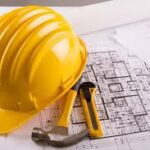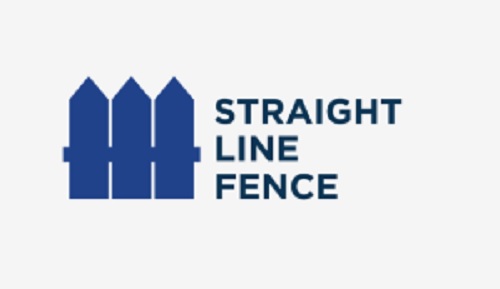Legal metrology plays a pivotal role in ensuring fair trade, consumer protection, and the integrity of measurement-based transactions. One of the key components within legal metrology is model approval. This process involves verifying that specific models of measuring instruments comply with legal standards and regulations before they are used in commercial transactions. In this article, we will delve into the concept of legal metrology model approval, its significance, the process involved, and its impact on industries that rely on accurate measurements.
What is Legal Metrology Model Approval?
Legal metrology model approval is a regulatory process in which measuring instruments or systems, including scales, weighbridges, gas meters, and fuel dispensers, are tested and certified for compliance with national or international standards. This ensures that the instruments used in trade and consumer transactions meet specified accuracy, reliability, and safety requirements as mandated by law.
Model approval is essential for maintaining public trust in commercial transactions, as it ensures that the measurements used to calculate prices, such as weight, volume, or length, are accurate and reliable. Without model approval, measuring instruments could be inaccurate, leading to unfair practices, potential fraud, and a loss of consumer confidence.
Why is Legal Metrology Model Approval Important?
The approval process serves several vital purposes:
- Ensuring Fair Trade: By verifying that measuring instruments conform to legal standards, model approval guarantees that consumers and businesses are treated fairly. For example, a gas station’s fuel dispenser must accurately measure the volume of fuel dispensed to ensure that consumers are not overcharged or undercharged.
- Protecting Consumers: Consumers rely on accurate measurements when purchasing goods or services. Whether it’s a bag of rice weighed on a scale or the amount of fuel purchased, legal metrology model approval ensures that measurements are precise and trustworthy.
- Maintaining Public Safety: Measuring instruments used in certain industries (such as health, safety, and pharmaceuticals) must comply with strict regulations to ensure that they do not pose any risk to public health and safety. For example, medical devices used for diagnostic purposes must be calibrated and approved to meet the required legal standards.
- Ensuring International Trade Compliance: Countries and regions often have their own legal metrology regulations, but many also align with international standards such as those set by the International Organization of Legal Metrology (OIML). Legal metrology model approval ensures that measuring instruments meet these standards, facilitating cross-border trade.
- Reducing Fraud: Without model approval, there is a risk of businesses using inaccurate measuring instruments to exploit consumers or other businesses. Model approval helps to prevent fraudulent activities by ensuring that all measuring instruments in trade are certified for accuracy.
The Legal Metrology Model Approval Process
The model approval process for legal metrology typically follows a series of steps, which may vary depending on the country or jurisdiction. However, the fundamental steps are as follows:
- Application for Approval: The manufacturer or importer of a measuring instrument submits an application for model approval to the relevant regulatory authority. This application includes detailed information about the instrument, such as its design, specifications, intended use, and the standards it is expected to comply with.
- Evaluation and Testing: The regulatory authority evaluates the application and may require the instrument to undergo rigorous testing to verify its accuracy and compliance with legal metrology standards. Testing often involves checking the performance of the instrument under various conditions and ensuring that it consistently provides accurate measurements.
- Certification: Once the instrument has passed the necessary tests, the regulatory authority issues a model approval certificate. This certificate indicates that the instrument meets the required standards and can be legally used in commercial transactions. In some cases, the instrument may be required to display a mark or label indicating that it has been approved.
- Periodic Re-certification and Inspection: After model approval, measuring instruments are typically subject to periodic inspections or re-certifications to ensure ongoing compliance. This may involve recalibration or re-testing to ensure that the instrument continues to perform accurately over time.
- Market Surveillance: In many jurisdictions, market surveillance authorities continue to monitor instruments in use to ensure that they remain compliant with legal metrology standards. This may include random inspections or checks of instruments used in commercial transactions to verify that they are still functioning within acceptable limits.
Types of Instruments Subject to Model Approval
Legal metrology model approval applies to a wide range of measuring instruments used in commercial transactions. Some common examples include:
- Weighing Instruments: These include scales used in retail, wholesale, and industrial applications, such as for weighing fruits, vegetables, or goods sold by weight.
- Fuel Dispensers: Gas stations and other fuel retailers must have their fuel dispensers approved to ensure that the quantity of fuel dispensed is accurate and in compliance with legal metrology standards.
- Retail Scales: Scales used in supermarkets, pharmacies, and other retail outlets to weigh products such as groceries or medicines.
- Gas and Water Meters: Instruments that measure the quantity of gas or water consumed by households or businesses.
- Length Measurement Devices: Instruments such as measuring tapes and rulers used in construction or retail, where length and dimension are critical for the sale of goods.
- Automated Teller Machines (ATMs): These are sometimes subject to model approval to ensure the accuracy of currency dispensing.
Legal and Regulatory Framework for Model Approval
Legal metrology model approval is typically governed by national laws and regulations, although many countries align their standards with international frameworks to facilitate global trade. Key legal and regulatory frameworks include:
- International Organization of Legal Metrology (OIML): The OIML provides internationally recognized guidelines and recommendations for legal metrology, which many countries adopt or reference in their own regulations.
- National Standards Agencies: In many countries, a national standards or metrology agency (e.g., the Bureau of Indian Standards in India, or the National Institute of Standards and Technology in the U.S.) oversees the legal metrology model approval process and ensures that instruments meet the required legal standards.
- Regional Regulations: In some regions, such as the European Union, model approval requirements are harmonized across member states, ensuring consistency and mutual recognition of approvals.
Conclusion
Legal metrology model approval is a critical element of ensuring fairness, transparency, and safety in trade and consumer transactions. By verifying that measuring instruments meet strict standards of accuracy and reliability, the process protects consumers and businesses alike from fraud and errors. It also plays a key role in maintaining public trust in measurement systems and facilitating international trade. As industries increasingly rely on accurate measurement systems, legal metrology model approval will continue to be a fundamental component of ensuring compliance, fairness, and transparency in markets worldwide.



